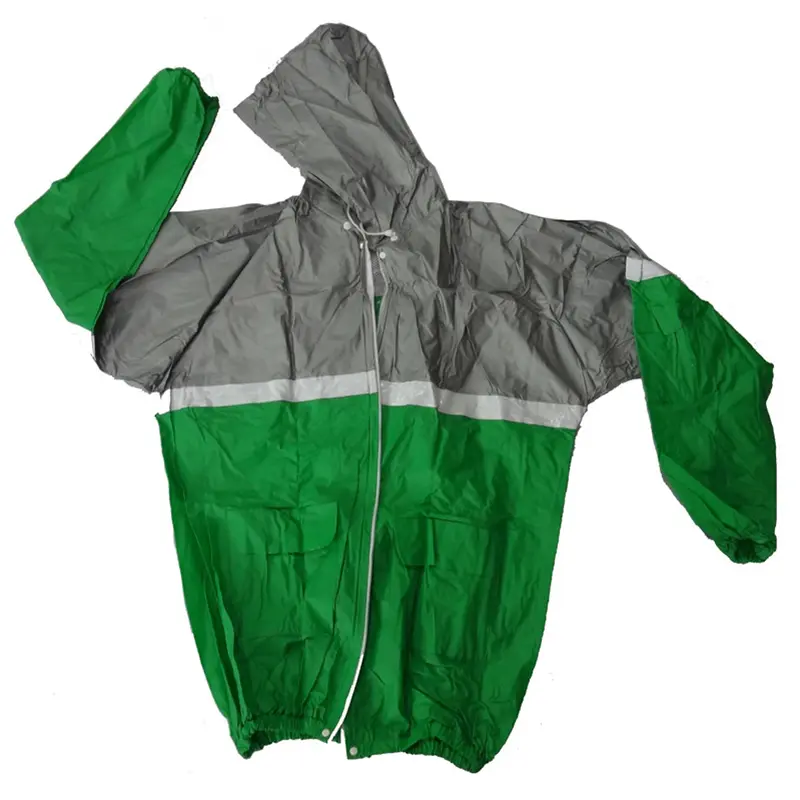May . 10, 2024 10:50 Back to list
How to Revive a Raincoat's Water Repellency
Clean the Raincoat
Washing away surface soil increases the raincoat's water repellency. Read the care label carefully. For some high-tech fabrics, the heat of the clothes dryer can reactivate the durable water-repellent finish (DWR).
Apply a New DWR Coating
Durable water-repellent finishes can be reapplied with a spray-on or wash-in product. These DWR products, which are also used for tents, are available in most sporting goods stores and online. Follow the manufacturer's instructions and apply the DWR to a freshly-washed raincoat.
How Often to Wash a Raincoat
If the coat has visible stains from body soil, food, or mud, it's time for a cleaning. A raincoat doesn't need constant cleaning, but if worn regularly, consider washing it once a month or after about 20 uses.
Regular cleaning increases a raincoat's water repellency by removing surface soil that can wear away the protective coating. However, if a raincoat has lost its resistance to water, it should be cleaned and treated with a commercial durable water repellent product.
PVC/PEVA Rainwear, Rainsuit, Reliable and Durable, 0.20mm Rain Suit
Treating Stains on a Raincoat
For non-breathable vinyl, rubber, or plastic coats, you can use a damp cloth or towel and a little dishwashing soap or laundry detergent to wipe away mud or stains. Similarly, according to its care label, you can pretreat any stain on a fabric raincoat with a dot of laundry detergent before washing the raincoat. Another option for treating a stain is to sponge a water and vinegar solution directly on the stain.
How to Care For and Repair a Raincoat
Certain tears, rips, and holes in raincoats can be mended depending on the extent of the damage and material. For a tear in a rubber coat, you can carefully apply rubber glue to the tear. If you get a hole in PVC or a vinyl coat, get a matching patch using a glue and patch kit made especially for PVC. Most glues take 24 hours to fully bond.
For waterproof fabrics, you can also find fabric tape or fabric tape patches as a quick fix for a rip or tear. Peel a piece of tape off of the roll (or get a self-adhering patch) and apply it to the outside of your garment at least 24 hours before you plan to use it. Most of these tapes have a waterproof coating.
Ironing a Raincoat
You never want to iron rubber, vinyl, or plastic raincoats. However, if you have a badly wrinkled fabric waterproof jacket, you can likely iron it using the lowest heat setting. Confirm by reading the care label.
Turn off the steam function since steam can melt the fabric. Use a cotton towel as a barrier between the iron and the raincoat fabric. Do not press down hard. Pass the iron evenly over the towel-covered fabric, never stopping or pausing.
Storing a Raincoat
Raincoats are usually a full-year garment, occupying a hanger in the coat closet for when you need it. Before you hang it up in the coat closet, ensure it's fully dry; otherwise, it can develop mold, mildew, and odors. Odors or spores can spread to other objects in your coat closet.
Some packable rain jackets have a carry bag for storing away after they've air-dried. Make sure the jacket is completely dry before folding it away.
-
PVC/PEVA Sleeves: Durable Protection for Workshop & Labour Safety
NewsAug.19,2025
-
Waterproof Kid Apron with Sleeves: PEVA/PVC for Painting Fun!
NewsAug.18,2025
-
36x90" Double Zipper Post Mortem Bag - Secure & Reliable
NewsAug.17,2025
-
Waterproof PVC/Vinyl Work Apron - Heavy-Duty Protection
NewsAug.16,2025
-
Heavy Duty Post Mortem Bag - 36x90, Double Zipper
NewsAug.15,2025
-
Durable PVC Vinyl Work Apron - Waterproof for Workshop
NewsAug.14,2025






